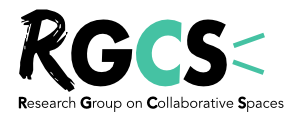By François-Xavier de Vaujany, PSL, Université Paris-Dauphine
The “derive” can be translated by the notion of “drift” in English. It is has been originally put forward in by Guy Debord, a member of the Letterist International, in the context of his “Théorie de la derive” which was formalized in the late 50s. Debord defined dérive as « a mode of experimental behavior linked to the conditions of urban society: a technique of rapid passage through varied ambiances. » Dérive is a full improvised, an unplanned walked journey through an urban landscape. Still according to Debord, the maximum number of participants is three, which makes it possible to keep the integrity of the group in the process of improvisation. Through “derive”, participants are expected to suspend their everyday relations and « let themselves be drawn by the attractions of the terrain and the encounters they find there ». Dérive aims at studying the “psychogeography” of the city (the lived experience of the city)) and emotional disorientation. Debord believed that the process could lead to potential creation of Situations.
Open Walked Event Based Experimentations (OWEE) share with derive a sense of improvisation, drift, bricolage. Going adrift in the urban landscape is also expected to produce a different experience of the city and some its visible and invisible dimensions (in particular about new work practices). During our last learning expedition in Boston (#hackingday2018), two thirds of the places or people we visited were improvised in the flow of our questions and discussions. Following new questions, new aspects we wanted to explore further, we sent emails, tweets, gave phone calls in the flow of our walk. As for “dérive”, crossed discussions in small groups are also important part of the process which often result in co-produced traces (articles, posts, Framapads, exhibitions of pictures, seminars…). Clearly, “dérive” techniques related to this issue could be explored further (in particular artistic techniques) to get lost differently in the space of the city.
Nonetheless, OWEE departs from derive on several key dimensions. It is not fully improvised. Part of the program is pre-defined, which gives a matter and direction (in all sense of the term) to our event. Only one part of the program is fully improvised. Then, our events have included till now between 3 and 67 participants. Even if we often divided big groups into smaller one, we are here far from Debord philosophy. The idea is also to produce collaborations and common worlds between participants and the world they bring with them in the flow of the walk. Social media are also another key aspect which adds another dimension in the dérive. Dérive is often extended on line. Virtual participant can walk and go adrift with us. Walkers can go adrift both in the flow of the walk and on line with their smartphone.
But at the end, both OWEE and derive share a strong belief. Encounters, true encounters, alterity, felt solidarity and ricoeurian instants are at the heart of the protocol. And they will be all the more relevant as they stress the invisible entry points, boundaries, gate-keepers, hidden practices and fragilities at the heart of the space of the city and our walked narrative.
